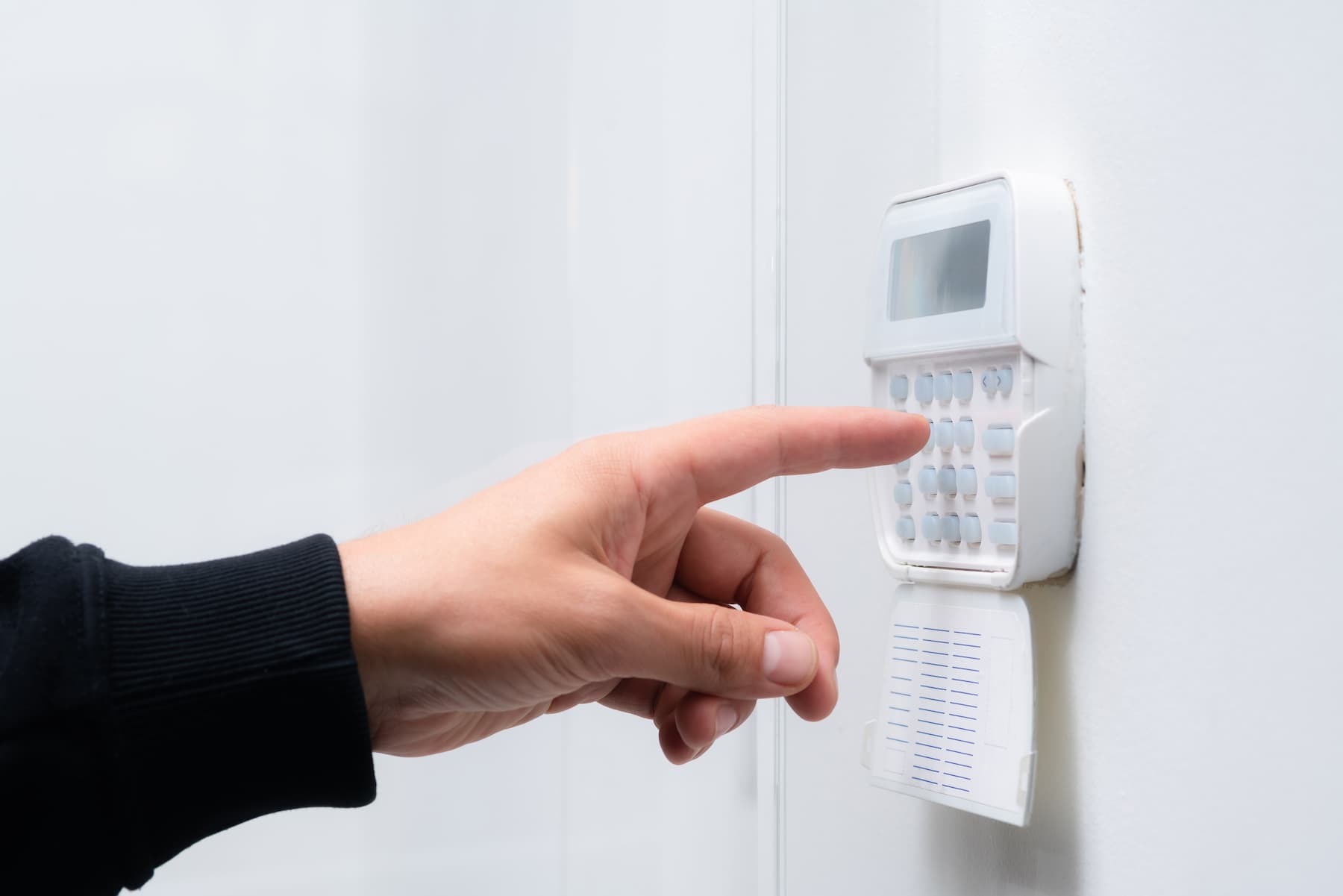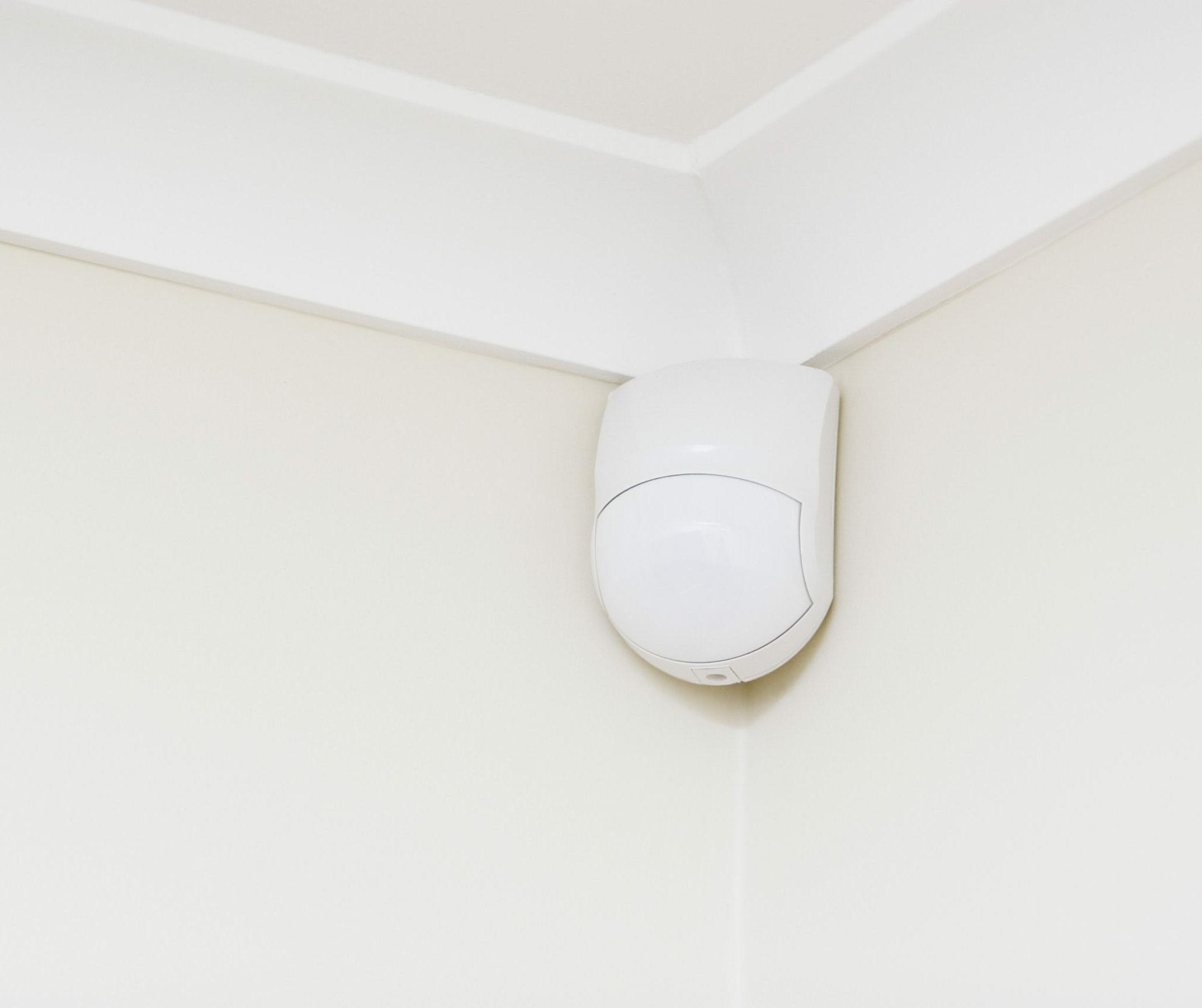Radar sensing is a technology for motion detection and analysis in smart homes and buildings that utilizes the power of radar—technology that transmits and receives radio waves. This article explains how radar sensing works and compares it to other key sensing and motion detection technologies such as passive infrared (PIR), cameras, and WiFi sensing.
What is a Radar?
To understand radar sensing, it is necessary to understand ‘radar’ itself. Radar is a technology that determines an object’s position, shape, motion, and trajectory by generating electromagnetic energy by radiating and analyzing the ‘echoes’ scattered from that object. It works similarly to ultrasound technology, except it uses electromagnetic waves instead of sound waves.
Radar uses electromagnetic waves, and It is related to a range of other technologies that deploy and interpret waves on the electromagnetic spectrum, such as regular radio transmissions, infrared, WiFi, and X-rays.
Radar waves can be measured by their wavelength and frequency. Wavelength is the distance over which the wave’s shape is repeated. Frequency is the number of waves that pass a fixed point in a given time (unit time). Unlike some other technologies, there is generally no specific limit on radar frequencies on the electromagnetic spectrum.
Radar frequency is determined based on a range of factors, including:
- Physical size of radar hardware
Transmission at lower frequencies, with longer wavelengths, usually requires large and heavy hardware. By contrast, as the frequencies get higher and the wavelengths shorter, radar can be placed in smaller and smaller equipment. - Power
Frequency/wavelength choice indirectly affects the ability to transmit much power. Larger and heavier radar equipment operates with large wavelengths and transmits power in the order of megawatts (MW). By contrast, millimeter-wave radar(mmWave radar) can transmit only in hundreds of watts (though the order of milliwatts is more common). We discuss mmWave radar in considerable detail below. - Beamwidth
A narrow beam means greater transmitted power and fine angular resolution in any given direction. The width of the radar’s beam is proportional to the wavelength ratio to the antenna’s width. In short, low frequencies mean large antennae to achieve a narrow beam. At the same time, small antennae are sufficient to achieve a narrow beam at higher frequencies. - Atmospheric attenuation
As they pass through the atmosphere, radio waves suffer from absorption due to oxygen and water vapor. They also suffer from scattering due to liquid hydrometeors—absorption and scattering increase with frequency. Above around 10 GHz, this becomes increasingly problematic.
Radar operates on a vast range of frequencies from below 1 GHz to over 120 GHz.
Read more about the physical attributes of radar at Radars and the Electromagnetic Spectrum, produced by the United States National Telecommunications and Information Administration (NTIA).
Specifically, equipped radar can apply the ‘doppler principle’ to produce velocity data for objects: It works by bouncing a signal off an object and then analyzing how the object’s motion changes the frequency of the returned signal. This feature of radar is used in the speed guns that Police use to detect speeding motorists.
Key types of radar include:
- Continuous Wave
In continuous wave radar, a known, stable, frequency energy signal is transmitted and received from a reflecting object. This detects an object’s presence and velocity but not its range. It is also commonly used in Police radars. - Frequency-Modulated Continuous Wave Radar (FMCW)
As the name suggests, this type of radar continuously changes the transmitted signal’s frequency at a known rate over a defined time period. It is commonly used in marine and air navigation and to prevent auto-collisions. - Pulse radar
In pulse radar, intermittent pulses are sent and received by the same antenna. The Doppler effect is used in ‘pulse Doppler’ radar to determine the object’s velocity.
In addition to the applications already mentioned, radar is deployed in:
- Moving target indication (MTI)
- Surveillance
- Electronic Warfare
- Missile and drone guidance systems
- Weather radar
- Tracking radar
- 3D mapping
- Automotive radar (e.g., automatically detecting the proximity of other vehicles) and
- Distance measuring equipment (DME).
What Is Radar Sensing?
Some radar applications relate specifically to motion detection, and some do not. For example, radar guides aircraft onto land, dock spacecraft, and map stationary environments.
Where radar is applied to motion detection, and especially when the application is smaller-scale and non-industrial, it is often referred to as ‘radar sensing.’ Radar sensing is used in assisted automobile driving to detect pedestrians and vehicles in front and provide collision avoidance warnings. It has also been deployed in a range of devices and IoT applications.
Due to its smaller-scale nature, radar sensing requires technology that uses smaller and lighter equipment. As mentioned earlier, mmWave radars transmit signals with a wavelength in the millimeter range. This means that the components, such as antennae, can be small yet highly accurate. Radar sensing can detect movement at levels of a fraction of a millimeter.
There are often trade-offs involved in optimizing radar technology. For example, the higher the resolution—the ability to distinguish between two objects—the lower the range of the radar.
The key components of a mmWave radar sensing system will include:
- Transmission and reception radio frequency antennae
- Analog components such as clocking
- Analog-to-digital converters (ADCs)
- Microcontrollers (MCUs) and
- Digital Signal Processors (DSPs).
What Benefits Does Radar Sensing Have Over Other Sensing Technologies?
1. Passive Infra-Red (PIR) vs. Radar Sensing
Despite being half a century old, PIR sensors are still a common component of home security systems.
PIR uses a pair of pyroelectric sensors which detect heat energy in their surroundings. When the heat signature between the two sensors changes in a certain way, such as when a person enters the room, the sensor is engaged, and action is taken (e.g., a light switched on or an alarm being initiated)
PIR does have some benefits compared to other sensing technologies:
- It is usually less expensive than radar sensing (though the cost of the latter is coming down over time)
- It is easy to install
- It works in the dark (compared to visual sensors)
- It does not require touch (as contact sensors do).
However, compared to radar sensing, PIR:
- It is far less accurate, with a much higher number of false positives.
- It has slightly narrower coverage, capturing objects at a distance of up to 10 meters, rather than the 15-meter coverage common from radar sensors.
- Cannot detect stationary or slow-moving objects. Detection requires that the sensors detect a change in heat signature, but there is no detectable change with stationary or slow-moving objects.
- Degrades in certain weather conditions/high heat
- It is aesthetically unpleasing. There is no way around the bulky and noticeable PIR sensors. Contrastingly, radar sensing can be housed in much smaller, discreet packaging.
2. Wearables vs. Radar Sensing
Sensing technologies are increasingly used to monitor and care for an aging and vulnerable population. Some sobering statistics to keep in mind include:
- One in three adults aged 65 or more will experience a fall annually.
- World Health Organization statistics suggest that falls are the second most significant cause of unintentional injury resulting in death. Each year, it is estimated that 600,000 people die around the world from fall-related injuries.
- Falls pose a significant financial cost, which is set to increase to US $240 billion by 2040.
In response, wearable sensing technologies have been developed to monitor individuals for falls. These include inertia measurement units (accelerometers, gyroscopes, and magnetometers), ultrasonic sensors, and force and pressure sensors.
Barriers to the uptake of wearables include:
- Many older adults do not want to wear them.
- Non-compliance, even if they wish to wear them, is a significant risk because they forget to put on the wearables.
- Privacy risks, as wearables, are often connected to personal information about the user.
How does radar sensing measure up against wearables?
Radar sensing can be introduced in devices within the home to detect falls and provide complex information about micromovements, such as gait and breathing analysis.
Unlike wearables, it does not rely on voluntary compliance (once installed, the technology is ‘set and forget’) and does not pose a privacy risk.
3. Cameras vs. Radar Sensing
Radar sensing can also be compared to standard visual solutions, such as cameras, as a motion detection technology.
The advantage of cameras is that they provide a high degree of detail on any possible intrusion: Anyone looking at a camera feed through their smartphone can immediately determine whether a detected individual should be in the home. For this reason, outdoor cameras are an important component of home security systems. However, cameras:
- Are line-of-sight only as they only detect individuals who walk straight in front of the camera
- Pose a privacy risk. In observing an individual’s appearance, cameras pick up sensitive personal information.
For this reason, cameras are often preferred as an outdoor rather than indoor security solution.
How does this compare to radar sensing?
- Generally speaking, radar sensing also relies on line-of-sight
- Unlike cameras and wearables, it does not gather any personal information about the user.
4. Radar Sensing vs. WiFi Sensing
WiFi sensing, like radar, uses the transmission and interpretation of electromagnetic waves to detect motion. Unlike radar sensing, it utilizes the power of wireless local area networks (‘WLAN’ or ‘WiFi’)—the kind used to power your home internet—to detect and interpret motion.
Like radar sensing, WiFi sensing is very accurate, and does not impede on the privacy of those in the home. It can be usefully deployed in a range of smart home and smart building applications including home security, energy efficiency and fall detection.
However, Radar Sensing does have a few disadvantages compared to WiFi Sensing.
- It is line-of-sight only, meaning radar sensing has to be directly in front of the object to detect it. It cannot ‘see through walls and around corners’ as WiFi sensing can.
- WiFi sensing is much more affordable than radar sensing, which requires multiple antennae and relatively expensive microwave Printed Circuit Boards (PCBs).
- WiFi sensing can be naturally integrated into many WiFi-compatible devices. Radar sensing usually requires more complex technology.
- Radar sensing has smaller coverage, usually covering areas 12 x 6 ft instead of the ≈1,000 square feet two connected WiFi Sensing devices can cover.
Radar Sensing as a Modern Sensing Solution
Radar sensing, and more specifically, mmWave radar sensing, is a powerful motion detection technology built on the well-established concept of radar. Its main benefit over other sensing technologies, such as PIR, cameras, and wearables, is how it protects an individual’s privacy. However, it does have some drawbacks compared to WiFi sensing—motion detection and analysis utilizing wireless or Wi-Fi networks. Radar sensing is more expensive, less interoperable, and has weaker coverage than WiFi sensing.
FAQ
Radar sensing technology is widely used in various industries, including automotive (for collision avoidance and adaptive cruise control), aerospace (for navigation and weather monitoring), healthcare (for patient monitoring and fall detection), and smart homes (for security and energy management).
Radar sensing and LIDAR (Light Detection and Ranging) are used to detect objects and measure distances. However, LIDAR uses laser light to create high-resolution 3D maps, while radar uses radio waves. LIDAR generally offers higher resolution but is more expensive and less effective in adverse weather conditions than radar.





